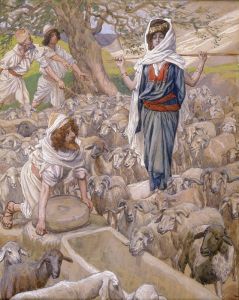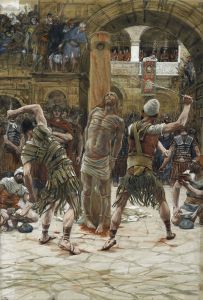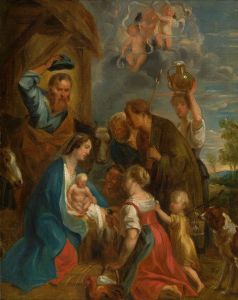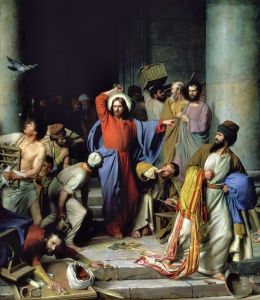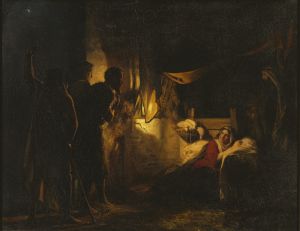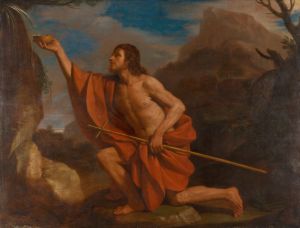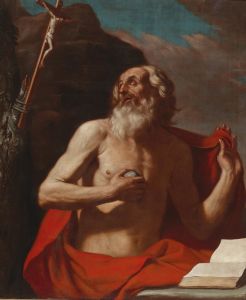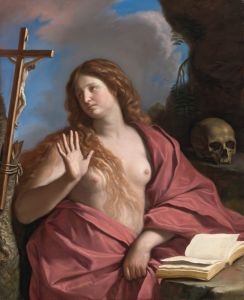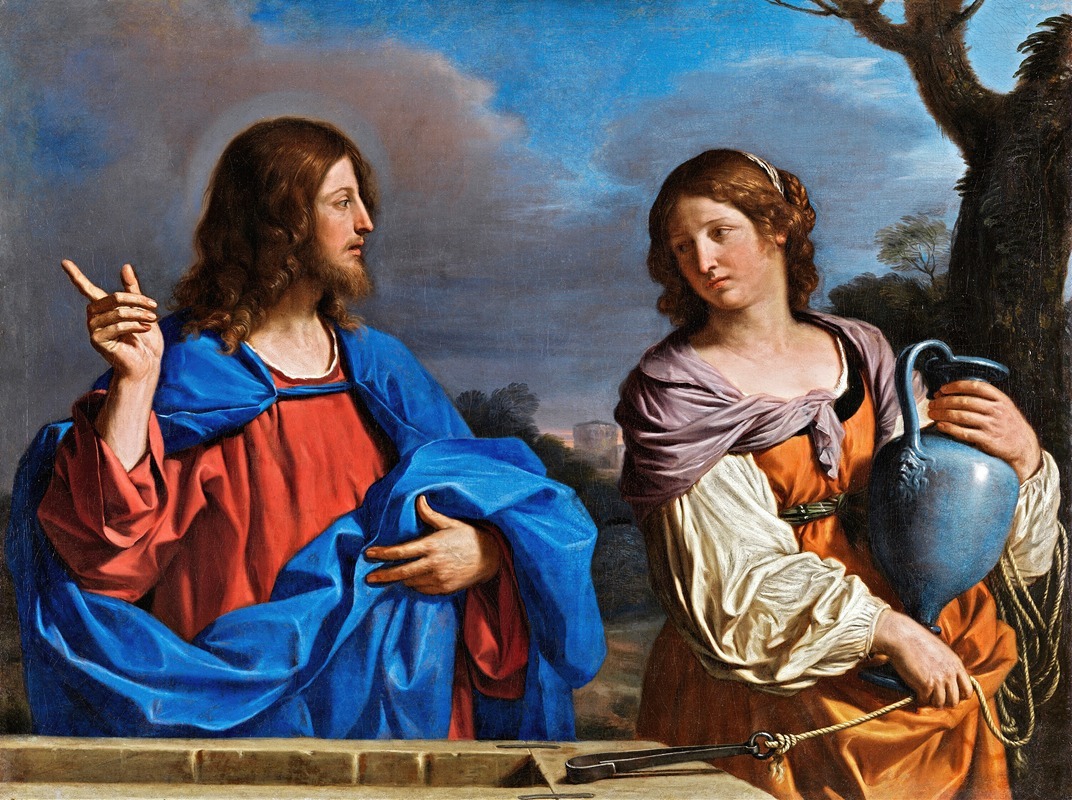
Jesús Y La Samaritana En El Pozo
A hand-painted replica of Guercino’s masterpiece Jesús Y La Samaritana En El Pozo, meticulously crafted by professional artists to capture the true essence of the original. Each piece is created with museum-quality canvas and rare mineral pigments, carefully painted by experienced artists with delicate brushstrokes and rich, layered colors to perfectly recreate the texture of the original artwork. Unlike machine-printed reproductions, this hand-painted version brings the painting to life, infused with the artist’s emotions and skill in every stroke. Whether for personal collection or home decoration, it instantly elevates the artistic atmosphere of any space.
Jesús y la Samaritana en el Pozo (Jesus and the Samaritan Woman at the Well) is a painting by the Italian Baroque artist Giovanni Francesco Barbieri, commonly known as Guercino. The artwork depicts a scene from the Gospel of John (John 4:1–42), where Jesus engages in a conversation with a Samaritan woman at Jacob's Well. This biblical episode is significant for its themes of salvation, inclusivity, and the breaking of social and cultural barriers.
Guercino, born in 1591 in Cento, Italy, was a prominent painter of the Baroque period, known for his dynamic compositions, dramatic use of light and shadow, and emotional intensity. He created numerous religious works throughout his career, often drawing inspiration from biblical narratives. Jesús y la Samaritana en el Pozo is one such example, showcasing his ability to convey spiritual themes through vivid and expressive imagery.
The painting portrays the moment when Jesus speaks to the Samaritan woman, asking her for water and offering her "living water" in return. This interaction is notable for its theological significance, as it emphasizes the universality of Christ's message and his willingness to engage with individuals outside traditional Jewish society. The Samaritan woman, considered an outsider due to her ethnicity and personal history, becomes a symbol of redemption and faith.
Guercino's composition captures the intimacy and depth of this encounter. Jesus is typically depicted seated near the well, gesturing toward the woman, who listens attentively. The artist employs a naturalistic style, with careful attention to the figures' expressions and gestures, enhancing the narrative's emotional resonance. The use of chiaroscuro, a hallmark of Baroque art, adds a dramatic quality to the scene, highlighting the spiritual significance of the moment.
The exact date of the painting's creation is not definitively documented, but it is generally attributed to Guercino's mature period, when he was producing works for various patrons across Italy. The painting is believed to have been commissioned for a religious or private setting, reflecting the era's demand for devotional art.
Jesús y la Samaritana en el Pozo is housed in a museum or private collection, though specific details about its current location and provenance are not widely available. The artwork remains an important example of Guercino's ability to interpret biblical stories with emotional depth and artistic skill, contributing to his reputation as one of the leading painters of the Baroque era.





